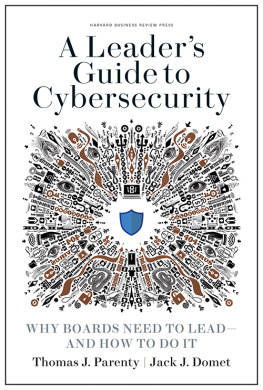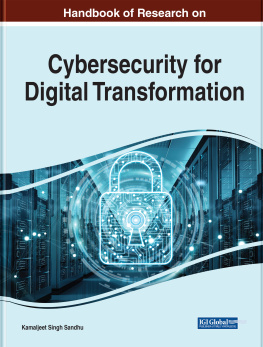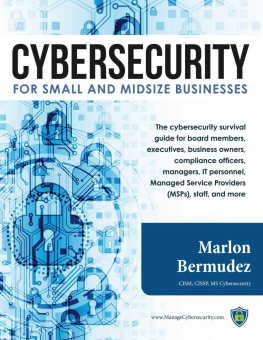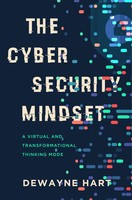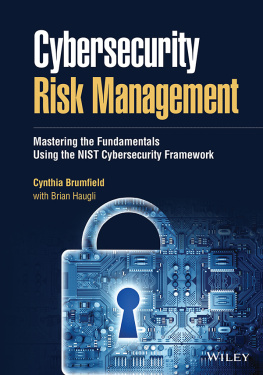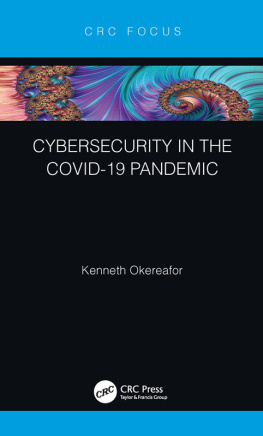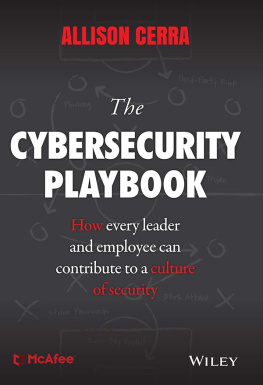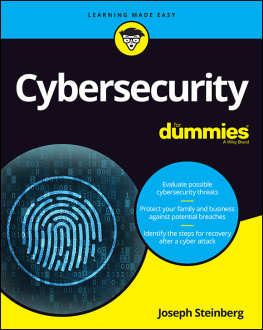Thomas J. Parenty - A Leader’s Guide to Cybersecurity: Why Boards Need to Lead–and How to Do It
Here you can read online Thomas J. Parenty - A Leader’s Guide to Cybersecurity: Why Boards Need to Lead–and How to Do It full text of the book (entire story) in english for free. Download pdf and epub, get meaning, cover and reviews about this ebook. year: 2019, publisher: Harvard Business Review Press, genre: Computer / Science. Description of the work, (preface) as well as reviews are available. Best literature library LitArk.com created for fans of good reading and offers a wide selection of genres:
Romance novel
Science fiction
Adventure
Detective
Science
History
Home and family
Prose
Art
Politics
Computer
Non-fiction
Religion
Business
Children
Humor
Choose a favorite category and find really read worthwhile books. Enjoy immersion in the world of imagination, feel the emotions of the characters or learn something new for yourself, make an fascinating discovery.
- Book:A Leader’s Guide to Cybersecurity: Why Boards Need to Lead–and How to Do It
- Author:
- Publisher:Harvard Business Review Press
- Genre:
- Year:2019
- Rating:5 / 5
- Favourites:Add to favourites
- Your mark:
A Leader’s Guide to Cybersecurity: Why Boards Need to Lead–and How to Do It: summary, description and annotation
We offer to read an annotation, description, summary or preface (depends on what the author of the book "A Leader’s Guide to Cybersecurity: Why Boards Need to Lead–and How to Do It" wrote himself). If you haven't found the necessary information about the book — write in the comments, we will try to find it.
Cybersecurity threats are on the rise. As a leader, you need to be prepared to keep your organization safe.
Companies are investing an unprecedented amount of money to keep their data and assets safe, yet cyberattacks are on the rise--and the problem is worsening. No amount of technology, resources, or policies will reverse this trend. Only sound governance, originating with the board, can turn the tide.
Protection against cyberattacks cant be treated as a problem solely belonging to an IT or cybersecurity department. It needs to cast a wide and impenetrable net that covers everything an organization does--from its business operations, models, and strategies to its products and intellectual property. And boards are in the best position to oversee the needed changes to strategy and hold their companies accountable. Not surprisingly, many boards arent prepared to assume this responsibility.
In A Leaders Guide to Cybersecurity, Thomas Parenty and Jack Domet, who have spent over three decades in the field, present a timely, clear-eyed, and actionable framework that will empower senior executives and board members to become stewards of their companies cybersecurity activities. This includes:
- Understanding cyber risks and how best to control them
- Planning and preparing for a crisis--and leading in its aftermath
- Making cybersecurity a companywide initiative and responsibility
- Drawing attention to the nontechnical dynamics that influence the effectiveness of cybersecurity measures
- Aligning the board, executive leadership, and cybersecurity teams on priorities
Filled with tools, best practices, and strategies, A Leaders Guide to Cybersecurity will help boards navigate this seemingly daunting but extremely necessary transition.
Thomas J. Parenty: author's other books
Who wrote A Leader’s Guide to Cybersecurity: Why Boards Need to Lead–and How to Do It? Find out the surname, the name of the author of the book and a list of all author's works by series.

